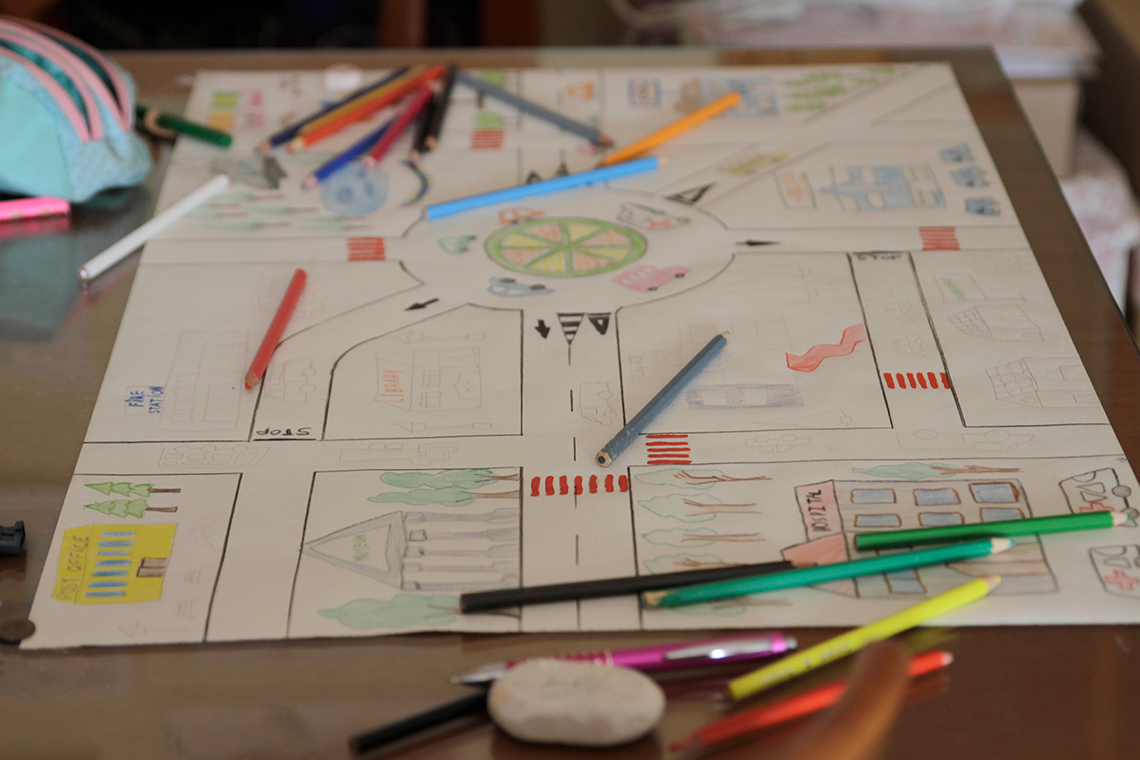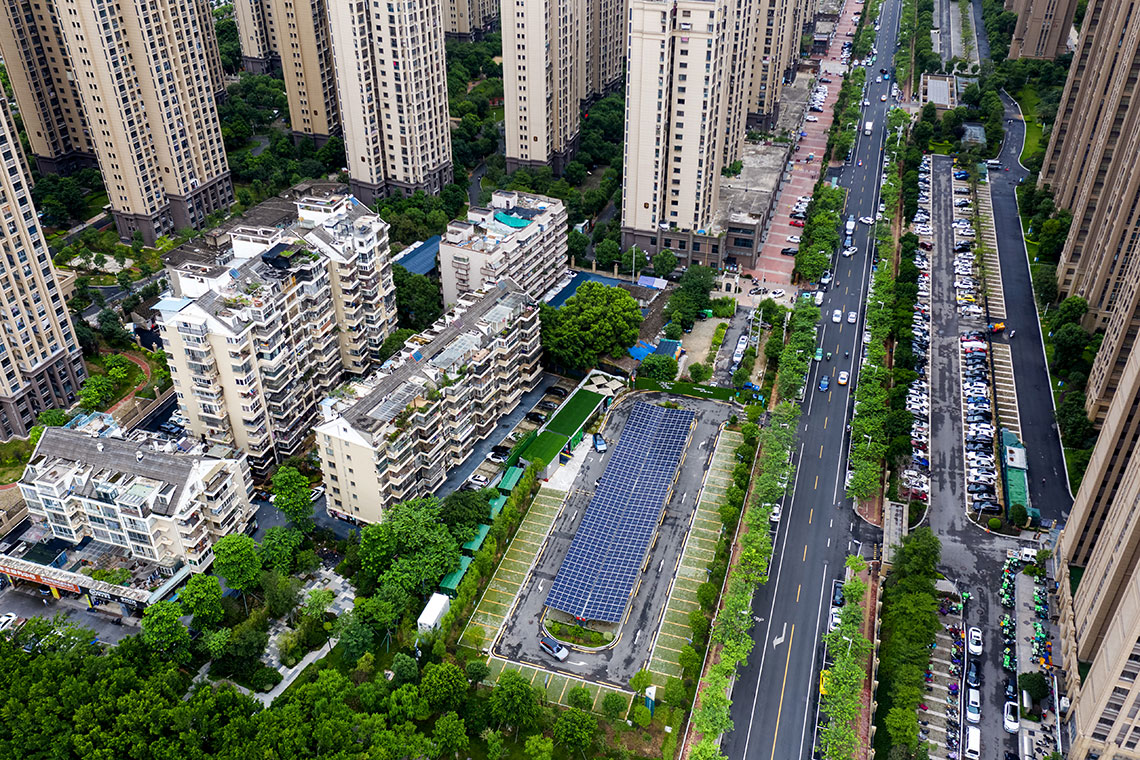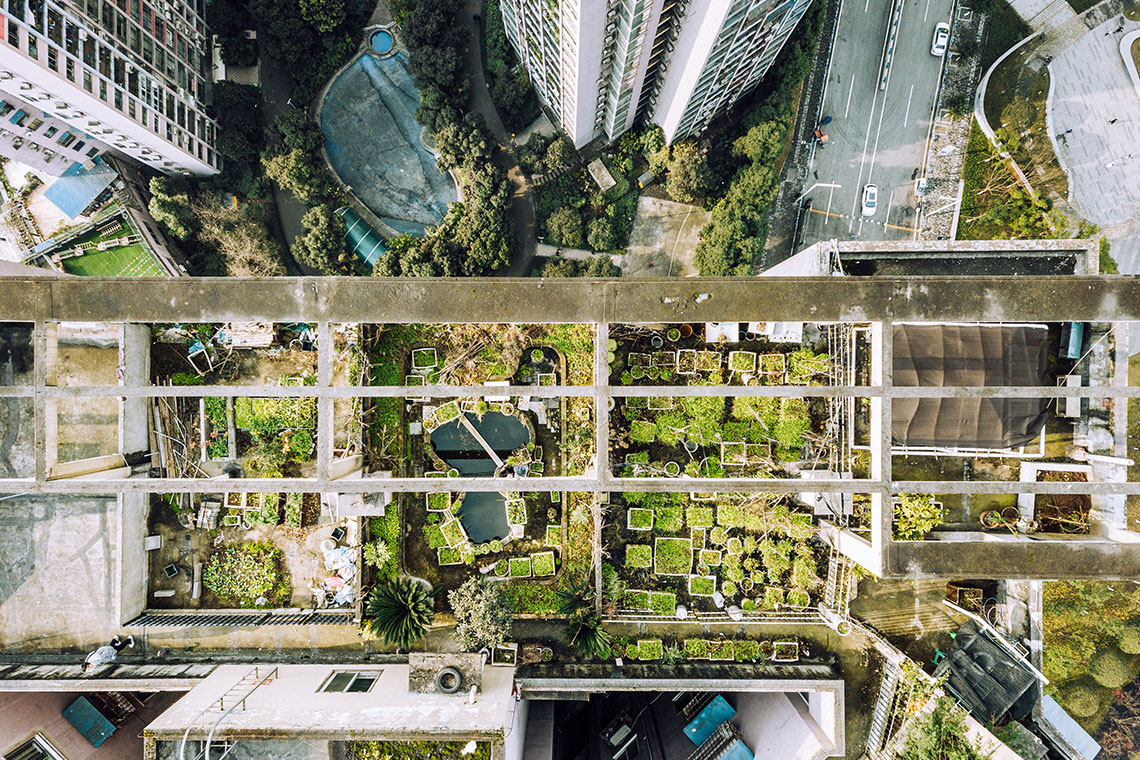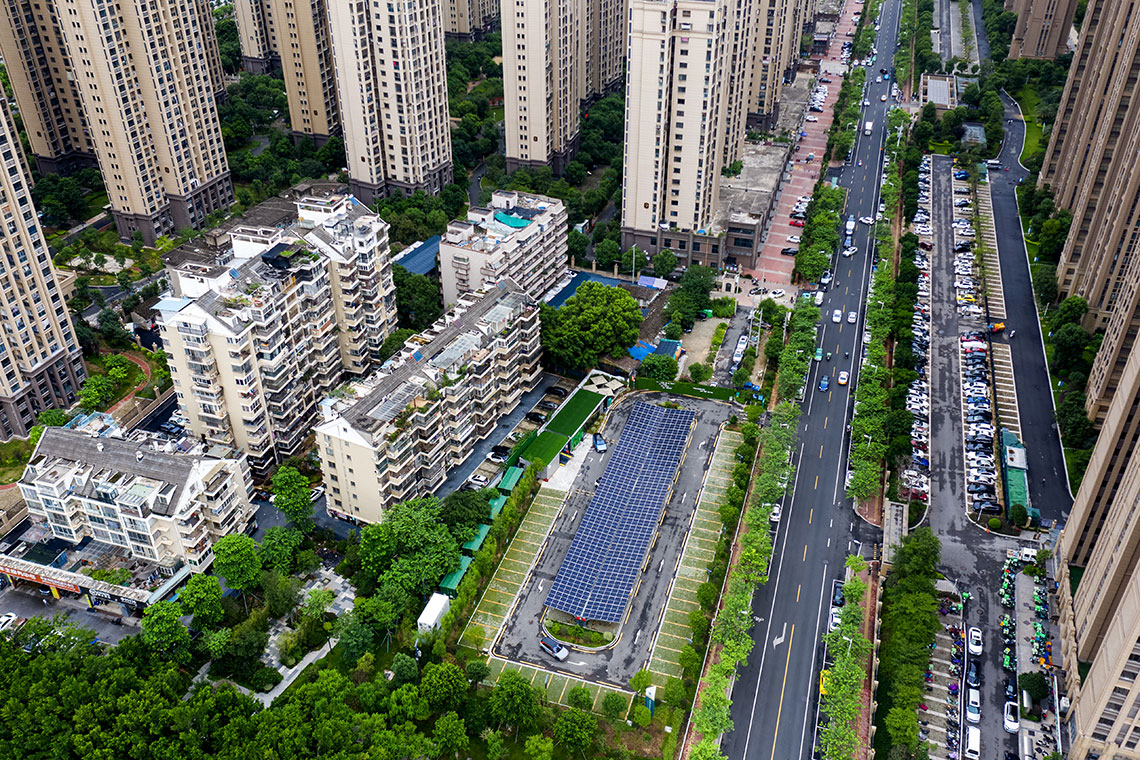Minds On
City spaces
Explore the following images.
What do you notice?
Are there any similarities and differences?
Record your thoughts using a method of your choice.
Action
City planning

In the Minds On, we explored images of city spaces. These spaces are constructed by teams of people such as scientists, civil and environmental engineers, city planners etc.
A city planner thinks about the design of a city or town so that it best supports the communities that live there. One important part of this job is to work with people in the communities to determine what they need and what might impact their health and the environment.
Let’s explore some of factors that a city planner might examine which could impact peoples’ health and the environment.
Press the following tabs to access different factors that affect human health and the environment.

A natural disaster is a major negative event that is caused by natural processes on earth.
Can you brainstorm any examples of natural disasters?
You may have thought of earthquakes, tsunamis, floods, volcanic eruptions, hurricanes, and more.
Natural disasters have a huge impact on human health, communities, and the environment. Humans could be forced to leave their homes. Sometimes natural disasters can impact the ability for communities to lack access clean water and proper sanitation, leading to other health problems.
Natural disasters can also affect animal homes and alter ecosystems.

Fossil fuels are often burned to generate electricity. The burning of fossil fuels creates emissions that create air pollution that are harmful to human health. Air pollution caused from the burning of fossil fuels can cause various health issues (i.e., asthma).
Fossil fuel production and transportation also cause water pollution. Wastewater from the production of fossil fuels contains harmful chemicals that contaminate groundwater and drinking water, negatively impacting human health and ecosystems.
When an oil spill occurs, it harms communities and wildlife, destroys habitats, erodes shorelines, and makes the water unsafe for drinking.
Lastly, most plastics (including single-use plastics) are made from fossil fuels. Many plastics end up in the ocean each year as plastic pollution, which is harmful to the ocean species.

The main types of pollution are air, land, and water pollution. Air pollution is everywhere and difficult to escape, having both short and long-term impacts on human health. Short term impacts could be a temporary illness such as bronchitis or pneumonia. However, if a person is exposed to air pollution for a longer period of time, they are at a greater risk of respiratory infections (breathing and lungs), asthma, heart disease, and lung cancer.
Like people, animals, plants, and entire ecosystems can be affected by air pollution. Air pollution particles eventually fall back to earth, contaminating water and soil, and can even harm crops, young trees, and plants.
When humans drink water that has been polluted, they are at risk for various diseases and other health effects.
Lastly, if fruits and vegetables are grown on land that is affected by pollution, it can cause health problems for humans that eat them.
Some types of land pollution like mining, farming, and factories can allow harmful chemicals to enter into the soil and water. These chemicals can negatively impact animals and plants, disrupting the food chain. Landfills release the greenhouse gas methane, which may lead to global warming.

Deforestation is the clearing or cutting down of large forest areas in order to use the trees to make products and the land for development or farming. By cutting down forests, there is an increased risk of spreading disease through mosquitos and ticks.
Trees absorb carbon, so when they are cut down, this carbon is released back into the atmosphere, increasing climate change. As trees are cut down, animals and plants lose their habitat and greenhouse gases are released into the atmosphere.
Trees also help to regulate the water cycle, so with a loss of trees, there is less water in the air to be returned to the soil causing desertification. As large amounts of forests are cleared away, Indigenous communities that live there and rely on the forest to sustain their way of life, are also under threat. They are forced to relocate and have lost natural resources they rely on for survival.
Complete the Factors Organizer in your notebook or using the following fillable and printable document. If you would like, you can use speech-to-text or audio recording tools to record your thoughts.
| Factor | How might this factor affect human health? | How might this factor affect the environment? |
|---|---|---|
| Natural disasters | ||
| Fossil fuels | ||
| Pollution | ||
| Deforestation |
Press the ‘Activity’ button to access Factors Organizer.
You may compare your ideas with the following sample notes.
Press ‘Sample Notes’ to access information about how different factors affect human health and the environment.
| Factor | How might this factor affect human health? | How might this factor affect the environment? |
|---|---|---|
| Natural disasters |
|
|
| Fossil fuels |
|
|
| Pollution |
|
|
| Deforestation |
|
|
Sustainable solutions
Once a city planner meets with groups such as community members, business owners, and government officials about factors that affect human health and the environment, they then create a plan and a design to address different issues.
Now that we have a better understanding of factors that are contributing impacting human health and the environment, we also need to consider solutions that can be used to help address these factors.

City planners must consider sustainability. Sustainability is the idea that we need to live in our environment without using too much of the earth’s natural resources. We want to be able to use what we need and make sure that natural resources do not run out for future generations.
What do you think a city planner should consider when designing a sustainable community?
Record your ideas in a method of your choice.
In a sustainable design, a city planner should consider the following features:
- transportation methods
- infrastructure
- energy production and consumption
- green spaces
- water conservation and waste management
Choose two of the above features to learn more about. Conduct independent research on two of the sustainable design ideas and respond to the following questions.
Check out this video to learn about the steps of the Scientific Research Process.
Record your ideas in your notebook, an audio recording, or in method of your choice.
- What will a city planner need to consider when designing this feature?
- How can this feature be more sustainable?
When you are finished researching, explore the information and images about all five sustainable design features in the carousel below. You may want to add any new ideas to your recorded information.
What else might a city planner need to consider when creating a neighbourhood or city design?
Consolidation
Putting it all together
This learning activity connects new and existing approaches for young scientists to create positive changes in their communities.

Reflect back to the images in the Minds On section of this learning activity. Are you able to notice any features of a sustainable community design in these images? If so, what are they?


Consider the following questions and record your responses using a method of your choice. If possible, share your thoughts with a partner.
- How are different social and environmental factors affecting human health and the environment?
- When planning for a future city, how might a city planner use the features of sustainable design to respond to different social and environmental factors?
- Why might it be important to design sustainable cities in the future?
Reflection
As you read through these descriptions, which sentence best describes how you are feeling about your understanding of this learning activity? Press the button that is beside this sentence.
I feel…
Now, record your ideas using a voice recorder, speech-to-text, or writing tool.

